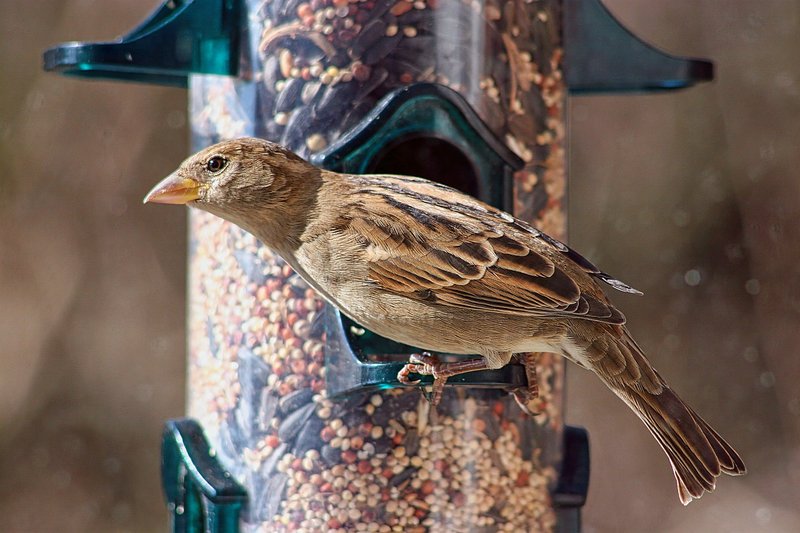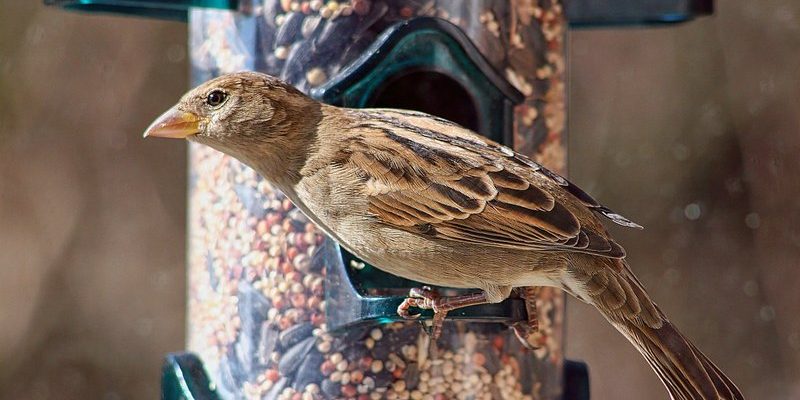
Imagine your yard buzzing with life as cardinals, blue jays, and warblers swoop down to nab inchworms. It’s not just about their beauty; these birds also help manage the pest population in your garden. Just like you’d set up a cozy coffee shop corner for your friends, you can create an inviting environment for birds. Let’s explore how to turn your garden into a haven for these inchworm-loving birds.
Understanding Inchworms and Their Role in the Ecosystem
Inchworms, also known as loopers, are the larvae of various moth species. They get their name from their unique movement—they measure their length as they inch along branches and leaves. But beyond their amusing name and interesting gait, inchworms play a vital role in the ecosystem, serving as a food source for numerous birds.
When inchworms are in season, they can be abundant, making them an attractive target for birds looking for an easy meal. You might spot them hanging out on leaves, blending in seamlessly with their environment. Their presence not only provides nutrition for birds but also helps sustain the delicate balance in nature. Birds that feed on inchworms often help keep their populations in check, preventing overgrazing of foliage.
By attracting birds that feast on inchworms, you’re doing your part to support the local ecosystem and promote biodiversity. Plus, you’ll have the added benefit of enjoying the lively antics of these birds right in your backyard!
Creating a Bird-Friendly Environment
To draw in birds that feed on inchworms, start by creating a welcoming environment in your yard. This doesn’t mean you need to turn your garden into a wildlife sanctuary, but there are a few simple changes you can make. First, consider adding native trees and shrubs, as many birds prefer these plants. Trees like oaks, maples, and hawthorns are known for harboring inchworm populations, keeping your feathered friends well-fed!
Next, think about incorporating varying heights in your landscaping. Birds, just like us, appreciate a good view. By adding layers to your garden—like tall trees interspersed with mid-height shrubs and low-growing plants—you give birds places to perch and nest. You might also want to consider adding a water source, like a shallow birdbath, where birds can drink and splash around.
Lastly, avoid using pesticides. While it may be tempting to eliminate every inchworm, using chemicals can harm the birds you’re trying to attract. Instead, focus on creating a balanced ecosystem in your yard. With a bit of patience and care, you’ll find yourself surrounded by birds feeding happily on inchworms.
Choosing the Right Plants
Selecting the right plants is crucial for attracting birds that feed on inchworms. Native plants are your best bet since they provide food and shelter that local birds need. Some excellent choices include:
- Oaks: These trees are hosts to numerous moth species, which means plenty of inchworms for birds to munch on.
- Maples: Another great source for inchworms, plus their beautiful foliage adds to your garden’s aesthetic.
- Willows: Willows attract birds with their appealing structure and the insects they harbor.
- Hawthorn: These trees not only support inchworm populations but also provide excellent nesting spots.
When picking plants, try to include a variety of heights and types. This diversity will help attract different bird species that might prefer certain plants over others. Plus, this variety creates a visually appealing landscape that you will love to enjoy. You could even join a local gardening group to learn more about native plants in your area.
Using Bird Feeders Wisely
While birds that feed on inchworms primarily hunt for their food in nature, bird feeders can still be a helpful addition to attract them. Instead of filling your feeders with seed or suet, consider offering mealworms. These are an excellent protein source that will draw in many of the insect-eating birds you want to see.
When you set up feeders, place them near trees or shrubs where birds feel safe. Birds often prefer feeders that allow quick take-offs when they sense danger. You might want to experiment with different feeder types. Some birds may prefer platform feeders while others enjoy tube feeders.
Another tip is to keep your feeders clean. Rinse them out regularly to prevent mold and bacteria from growing, which keeps your feathered friends healthy and safe. Lastly, make sure to place your feeders in areas that are easy for you to observe, so you don’t miss the action when the birds come calling!
Timing and Seasonality
Birdwatching is often seasonal, and understanding when birds feed on inchworms can enhance your experience. Inchworms tend to be most plentiful in late spring and early summer. During this time, birds are actively searching for food to feed their young chicks.
Observe your surroundings as the seasons change. Early spring is often when you’ll notice inchworms starting to appear, and shortly after, you should see an uptick in bird activity. Make sure to have your feeders stocked and your garden ready by late April or early May.
You might even consider keeping a bird journal. Jot down which birds show up and when, along with any interesting behaviors you notice. This can help you learn more about the feeding patterns and preferences of local bird species, allowing you to adjust your yard to keep inviting them back year after year.
Providing Shelter and Nesting Options
Birds need shelter just as much as food. If you want to draw in those inchworm-loving birds, providing appropriate nesting locations is essential. Consider installing nesting boxes or leaving natural features like shrubs and dense areas in your garden.
Nesting boxes should be placed in locations that are safe from predators and sheltered from harsh weather. Be sure to research the preferences of specific birds; some species prefer open boxes, while others may want enclosed ones. You might also want to add plants that produce berries or seeds, as they provide additional food sources and shelter.
Let’s not forget about leaving dead trees standing when it’s safe to do so. Snags often make great nesting sites, and they support a variety of wildlife, including insects and, yes, inchworms. Embracing “messy” parts of your garden can create a more natural habitat, leading to a rich environment full of bird activity.
Patience Is Key
Last but not least, remember that attracting birds takes time and patience. It’s a bit like waiting for a good cup of coffee to brew; you just can’t rush it. You might not see immediate results, and that’s perfectly okay.
Birds are often creatures of habit. If they find your garden appealing, they will come back regularly. Just keep your feeders stocked, maintain a clean space, and continue encouraging the growth of native plants. It might take weeks or even months, but the reward of having birds feeding on inchworms right outside your window is worth the wait.
In conclusion, attracting birds that feed on inchworms can transform your backyard into a lively oasis. By creating a bird-friendly environment, choosing the right plants, and providing shelter, you’ll not only support these beautiful creatures but also enjoy their company for seasons to come. So, grab your coffee, sit back, and enjoy birdwatching—you deserve it!

